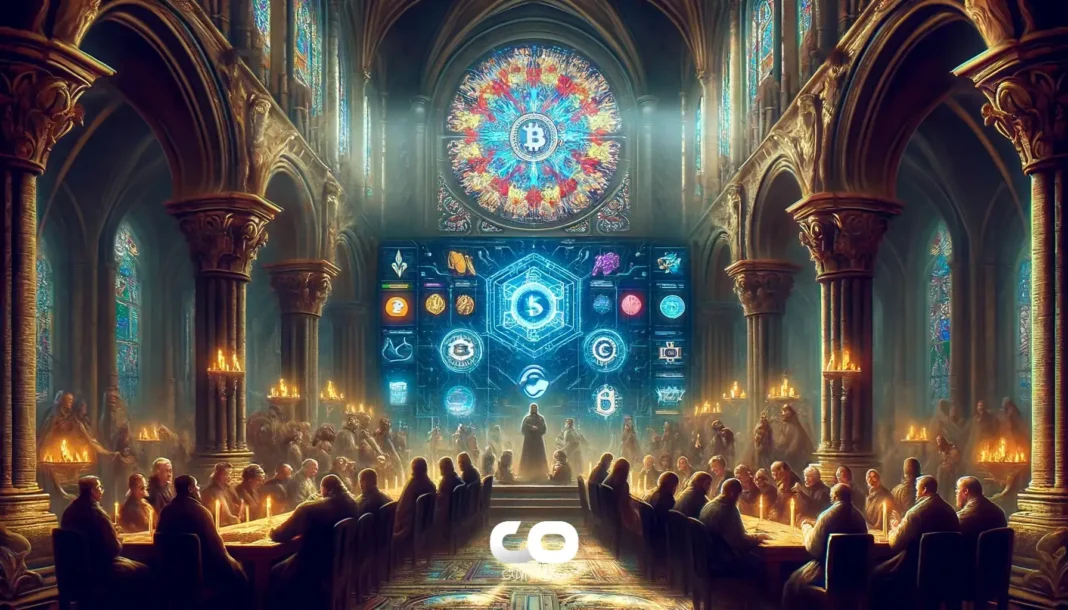-
Ripple, Peersyst, and Axelar have collaboratively launched the XRPL EVM sidechain mainnet, introducing Ethereum-compatible smart contracts to the XRP Ledger (XRPL) and significantly enhancing its blockchain interoperability.
-
This integration enables developers to deploy decentralized applications (dApps) on XRPL using Ethereum’s robust smart contract framework, expanding the ecosystem’s utility and cross-chain connectivity.
-
David Schwartz, Ripple’s CTO, emphasized that the XRPL EVM sidechain “expands core XRPL capabilities without altering its base attributes,” signaling a strategic enhancement of the network’s functionality.
Ripple’s XRPL EVM sidechain launch boosts Ethereum compatibility, enhancing XRP utility and cross-chain interoperability, positioning XRPL for broader DeFi and dApp adoption.
XRPL EVM Sidechain Mainnet Launch: A New Era for Ethereum-Compatible Smart Contracts
The recent launch of the XRPL EVM sidechain mainnet marks a pivotal development for Ripple and the broader XRPL ecosystem. By integrating Ethereum Virtual Machine (EVM) compatibility, Ripple enables seamless deployment of Ethereum-based smart contracts on the XRP Ledger. This advancement is the result of a strategic partnership with Peersyst and Axelar, two key players in blockchain interoperability and infrastructure.
This sidechain operates independently of the XRPL’s core architecture, preserving its high-speed transaction capabilities while introducing the flexibility and programmability of Ethereum’s smart contract environment. Consequently, developers can leverage familiar tools and languages like Solidity to build decentralized applications (dApps) that benefit from XRPL’s scalability and low fees.
Cross-Chain Interoperability and Developer Opportunities
Axelar’s involvement brings a crucial cross-chain bridge that connects the XRPL EVM sidechain with over 80 other blockchains, facilitating asset transfers and communication across multiple networks. This interoperability is a significant step toward a more connected blockchain ecosystem, where assets and data can flow freely without intermediaries.
For developers, this means expanded opportunities to create innovative DeFi protocols, NFT platforms, and tokenized asset solutions that can interact with Ethereum and other chains seamlessly. The XRPL EVM sidechain’s compatibility reduces friction for Ethereum developers looking to explore XRPL’s advantages, potentially accelerating adoption and ecosystem growth.
XRP as the Gas Token: Enhancing Network Utility and Market Dynamics
Integral to the XRPL EVM sidechain is the designation of XRP as the primary gas token, which directly ties the cryptocurrency’s utility to the new smart contract environment. This move is expected to increase demand for XRP as developers and users require it to pay transaction fees within the sidechain.
By positioning XRP at the center of this expanded functionality, Ripple strengthens the token’s role beyond its traditional use cases, potentially driving increased liquidity and market interest. Institutional investors and developers may view this as a positive signal, reflecting XRP’s growing relevance in the DeFi and cross-chain application sectors.
Market Implications and Future Outlook
Analysts anticipate that the XRPL EVM sidechain launch will catalyze a positive market sentiment for XRP, driven by enhanced network utility and broader developer engagement. Historical trends from Ethereum-compatible platforms like Polygon and Binance Smart Chain suggest that such integrations often lead to increased token adoption and price appreciation.
Moreover, the ability to interact with a diverse range of blockchains via Axelar’s bridge positions XRPL as a competitive player in the multi-chain future. This strategic expansion could attract new projects and partnerships, fostering a vibrant ecosystem that supports a wide array of decentralized financial services and applications.
Conclusion
The launch of the XRPL EVM sidechain mainnet represents a significant milestone in Ripple’s roadmap, combining Ethereum compatibility with XRPL’s inherent strengths. By enabling XRP as the gas token and facilitating cross-chain interoperability, Ripple is enhancing the utility and appeal of its network for developers and investors alike. This development not only broadens the functional scope of XRPL but also positions it strategically within the evolving blockchain landscape, promising sustained growth and innovation.







